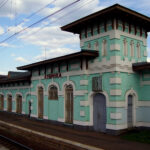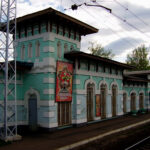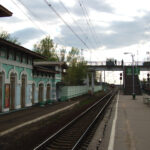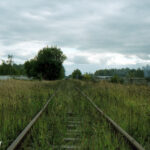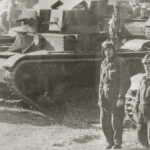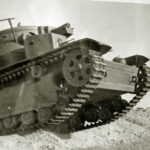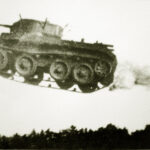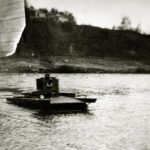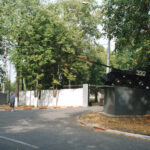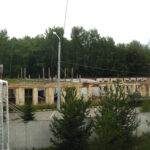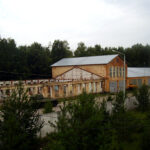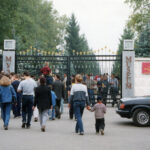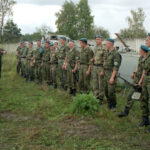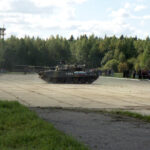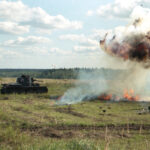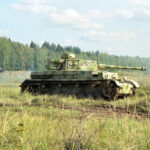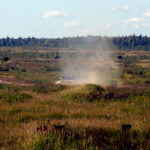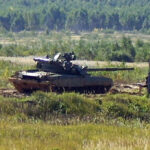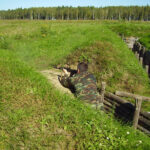Guide and reference book on the Cold War history and the exhibits in the collection of the Tank Museum in Saumur (Loire Valley) and Dom Les Invalides (Paris). This guide is also useful for describing the collection of the US Cold War Museum and militaria collectors of Soviet uniforms and insignia, as well as for lovers of reenactment. The authors of this “encyclopedia” agree to the use of the information and illustrative material in your books or your Internet publications, subject to links to the source, the guide pages. Upon your request, the authors can send the better quality images and the photographs that are not included in this encyclopedia. Our team is always friendly to the colleagues from all countries. For a long time we conducted the private tours into the museums below and around the WW2 battlefields of Kursk and Stalingrad and have a great exclusive experience. We are also ready to take you on anu private tour in France to visit the military museums in the Loire Valley and on the famous WW2 battlefields of the D-Day Allied landings in Normandy and other regions. We are just like you, but we live in France, albeit with a little “American” way of the thinking 🙂
- Old brick building of Kubinka station
- Railway station Kubinka, archive photo 2006
- Road to the West, to Berlin, to Paris
- Old separate track to the test site (2002)
Kubinka is a small railway station located 65 kilometers west of Moscow in the direction of Poland, Germany and France. Nearby is the M1 “To Berlin” motorway, which in Soviet times was called the only one real road, since the rest of the “paths” were of the poor quality and became impassable during rains. From the time of the creation of the Red International Army by Leo Trotsky, the task was to capture all the countries of Europe and make them a communist regime, the World International. This is narrated by the first March of the Red Army in 1920 in the verse “Give me Warsaw, give me Berlin, we have already captured the Crimea!”. The Bolsheviks destroyed plants and factories, killed the smartest and most competent military engineers. Some, such as aircraft designer Sikorsky, managed to escape to the US and save their lives. After the First World War, the world leaders in tank building were France, Great Britain and the USA. The first tank produced in Soviet Russia was an illegal copy of a captured French Renault FT-17 tank, renamed “Fighter for Freedom Comrade Lenin”. From 1920 to 1930, the tank forces of the USSR were captured British low-speed Mk-5 “Rhombus” (called “big”) in the amount of about 20-25 pieces and Renault Ft 17 (original and illegal copies, called “small”) in the amount of no more 20. But by 1930, it was unrealistic to capture the countries of Europe with such armored forces. To do this, the Soviet government began to buy from the UK samples of small, medium and large tanks for cloning and capturing England itself! During the First World War, experimental Russian tanks of an unusual shape were tested in the north of the Moscow region, the Lebedenko project. To the west of Moscow, there was also an engineering range, later named after the deceased General Karbyshev. The tank test site had to have the following properties: be located near Moscow and factories, be close to the railway station for the delivery of equipment, have a good road for testing, have a river or a pond for testing on water. The old ranges did not meet these requirements and in 1931 it was decided to create a new tank range from scratch a few kilometers south of the Kubinka railway station on a bare field. The barracks and the houses for the military personnel, the hangars for the tanks storing and a testing ground were built on an empty area. Thus, the first military base appeared in the Kubinka region. According to a terrible tradition, during the “Great Terror” in 1938, Comrade Stalin, as a “gratitude” for the creation of the training ground, shot his head the brigade commander with a Jewish surname Preisman. The classic accusation was the unsubstantiated stigma “People enemy and Polish spy”.
- Double-turreted soviet tank on a Cardin-Lloyd chassis testing
- Overcoming obstacles, ditches and slopes
- Long jump of a BT tank on a Christie chassis
- Amphibian overcomes a water barrier
During the Second World War, the front line passed exactly along the Kubinka-Naro-Fominsk line, which was facilitated by the terrain, the dominant heights and the Nara River.
After the Second World War, this position, convenient for the defense of Moscow, was taken by the famous 4 Kantimirovskaya Tank Division. At the same time to the south and southwest of Kubinka RRS, 15-20 km., located no less famous 2 Guards Taman Motorized Division. Thus, a closed rectangle with sides of 15-20 km appeared, bounded on all sides by forests and highways, which turned the entire zone into one large military base with platforms for safe artillery firing. As part of this zone, there was the only surviving cavalry regiment that served for filming and the military-technical base of the cinema of the Mosfilm concern itself. On the other side of the railway from the Kubinka station, an airfield was equipped, where the famous “Russian Knights” aviation group is now located.
- Military town and 38NIII, rare archival photo, 2002
- Ruins of the Stalin barracks (2006)
- Former secret library and archive 38NIIII (center) and hangars (2006)
- The original entrance to museum from the restricted shooting range, rare photo 2002
- Paratroopers of the 45th Sp. regiment at the festival in the Museum, 2003
- Demonstration T-80U, tank shooting range, 2003
- WW2 Czech T-38 “Prague”, tank shooting range, 2003
- German Pz T-IV L, 38 NIII range, 2003
On the northern part of the tank range, barracks and a military base of the most elite 45th special forces regiment of the Airborne Forces were built. During the Cold War, the 350th Guards Regiment of the Airborne Forces, located in Belarus, was supposed to capture and destroy airfields and strategic facilities in France. But instead of France, this regiment was the first to be introduced into Afghanistan, where it suffered heavy losses. With the collapse of the USSR and the separation of Belarus, the 45th regiment, deployed in 2015 into a brigade, became the main special forces regiment for capturing enemy airfields. The personnel of this regiment and its training base served as the basis for the creation of the Special Operations Forces (SOF), which partially remained on Kubinka, partially moved to the main GRU base in Senezh, Moscow Region, located not so far away.
- 2 Guard Tamonskaya Motorized Division range (2006)
- Tank shooting range, 2006
- Small arm shooting, 2006
- Shooting from the trenches, same area
Not so long ago, during the big new reforms of the army by the civilian Minister of Defense Serdyukov (nicknamed disparagingly “The Stool Maker” and removed from his post for corruption and a sex scandal), there was a big reorganization of the tank museum and in general all the military museums of the country in order to make a big profit through propaganda “patriotism” area. On the basis of the rectangle described above from Kubinka to the 2nd Taman division, a museum entertainment and patriotic complex “Patriot Park” (also called “Military Disneyland”) was created. Rare exhibits from the service museums of military schools and academies were moved to Patriot Park. First of all, this is a collection of military vehicles and equipment of the Airborne Forces from Ryazan city, as well as part of the aircraft from the aviation museum in Monino. The large pavilions and platforms for the military exhibitions of weapons and equipment “Expo” were also equipped here. To promote and advertise the Russian weapons, in addition to the parades on the Red Square, the special “Army Games” began to be held, the “Military Olympics” for the Russia’s friendly countries – China, Syria, Angola, Cuba and other Arab, African and Latin American states. Kubinka Park Patriot becomes the headquarters of the Army Games, and in the regions of Russia and even in China, the branches, the “gambling grounds” are formed at the local training grounds. A gigantic military Orthodox cathedral was built, but instead of the traditional religious scenes with the pictures of the Soviet past, the military commanders and the famous WW2 battlefields. Thus, Kubinka turned into a large military base, the exhibition complex and the entertainment center with a patriotic profile.
Separate Guides to the constituents of Kubinka:
- 38 Research institute and test site.
- Tank Museum, armored vehicles and weapons 1938 – 1992-2014.
- Kubinka tank museum collection official exhibits catalog
- 45th Regiment (Brigade) Special Forces Brigade of the Airborne Forces.
- 4th Guards Kantimirovskay Tank Division
- Military-technical base of Mosfilm concern.
- Mosfilm cavalry regiment, then parade guard of the FSO.
- 2 Guards Taman Motorized Division
- Kubinka airfield and the aerobatic team “Russian Knights”
- Patriot Park Headquarters
- Army Games, the military olympiade
- International Arms exhibitions Expo and Forum

